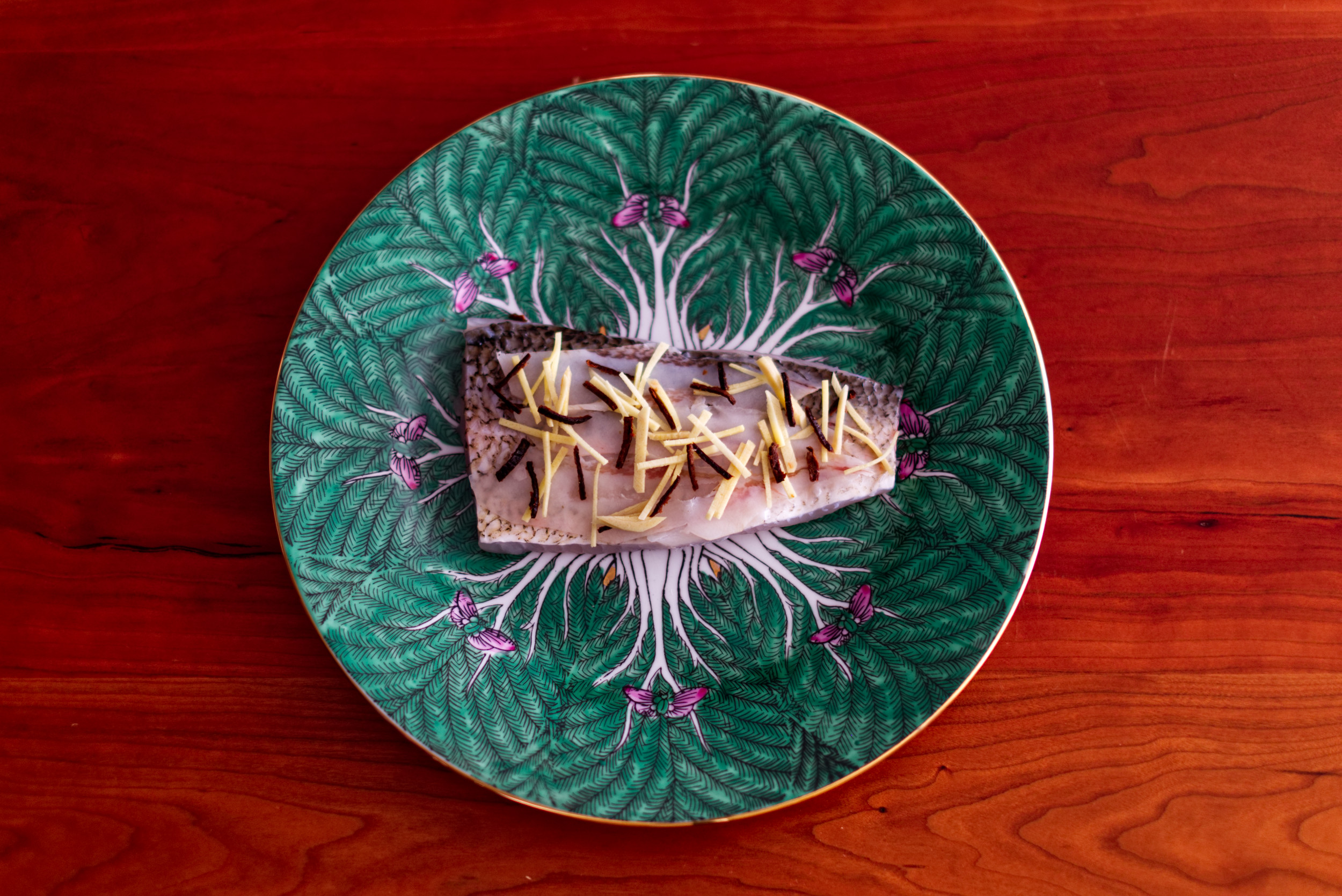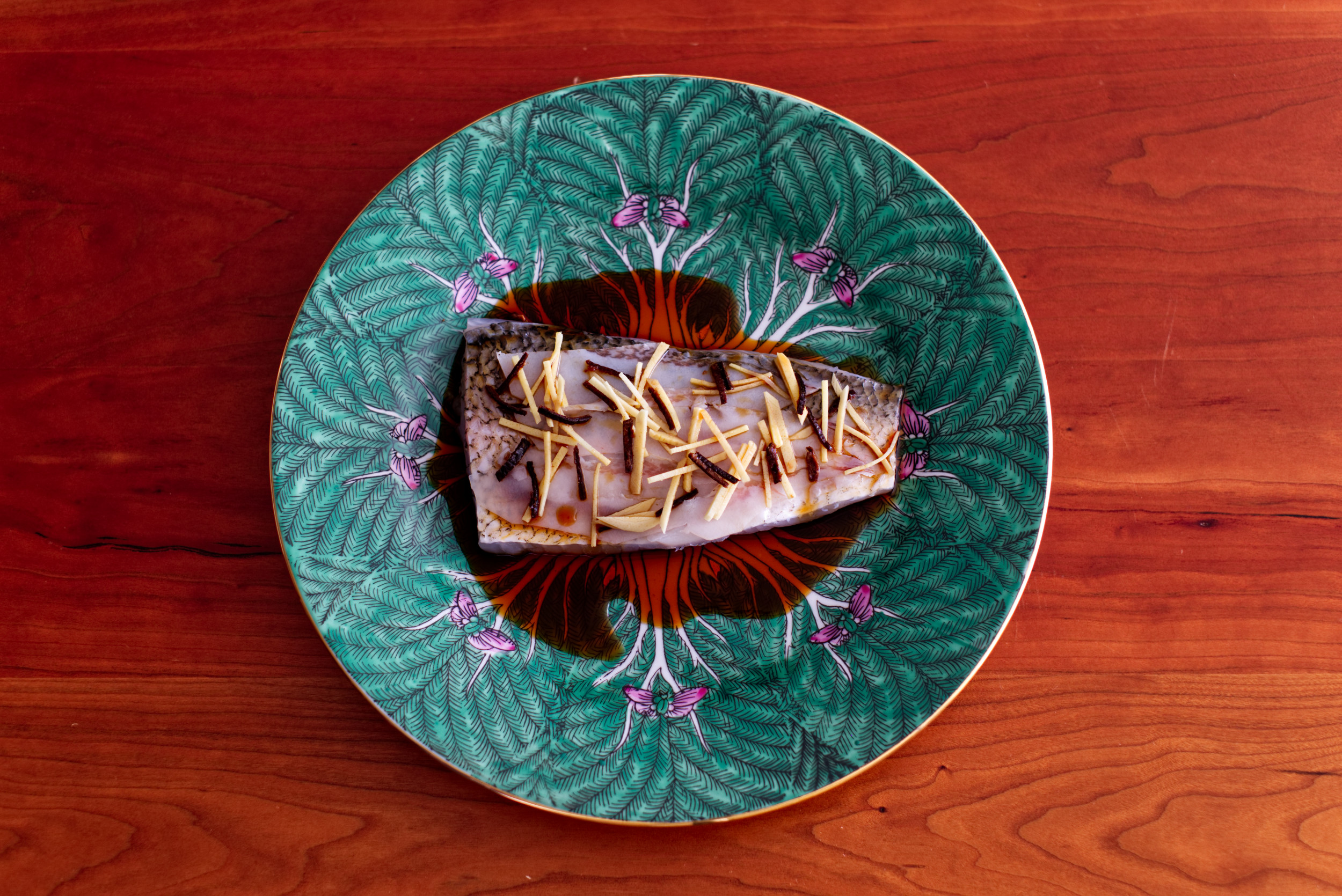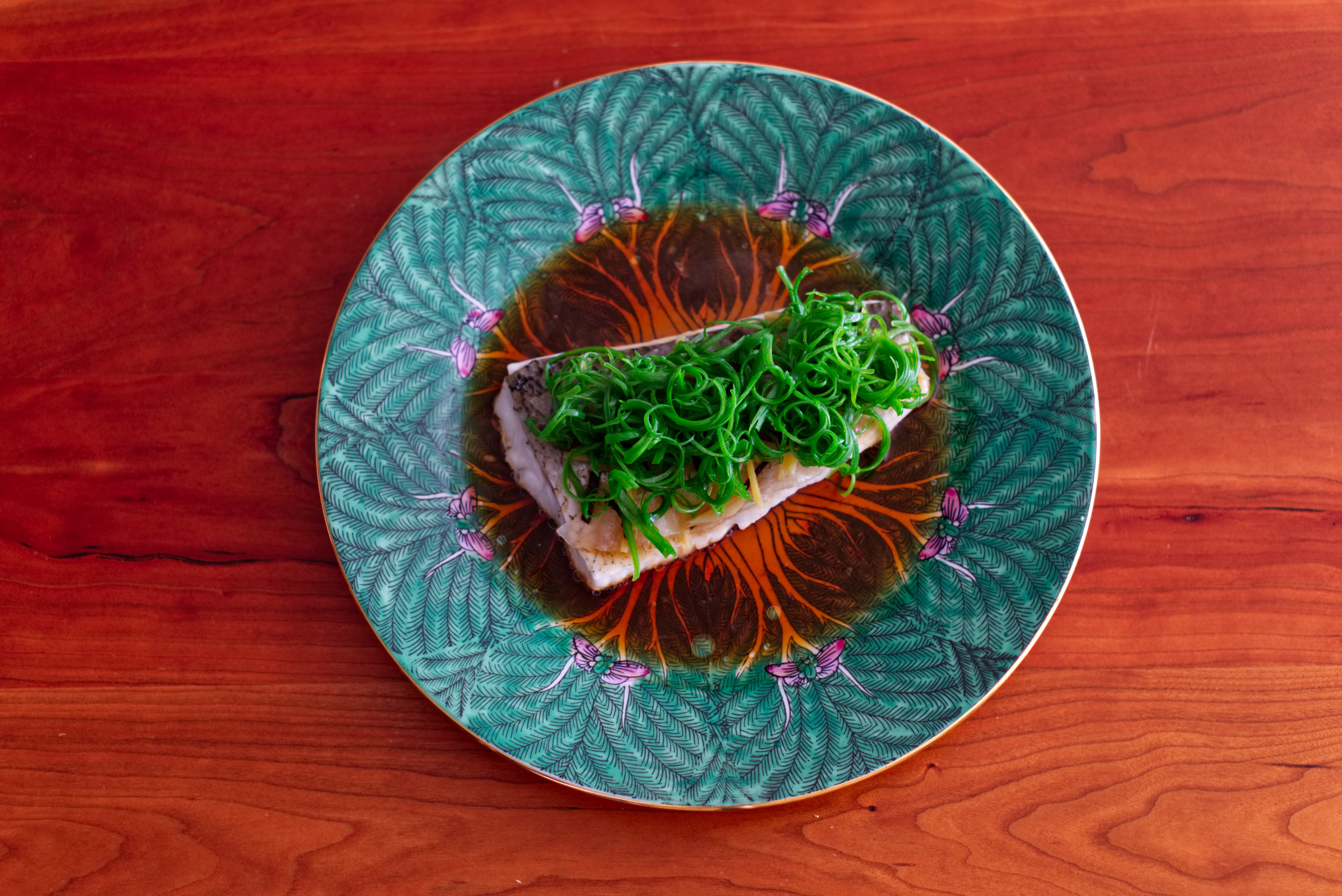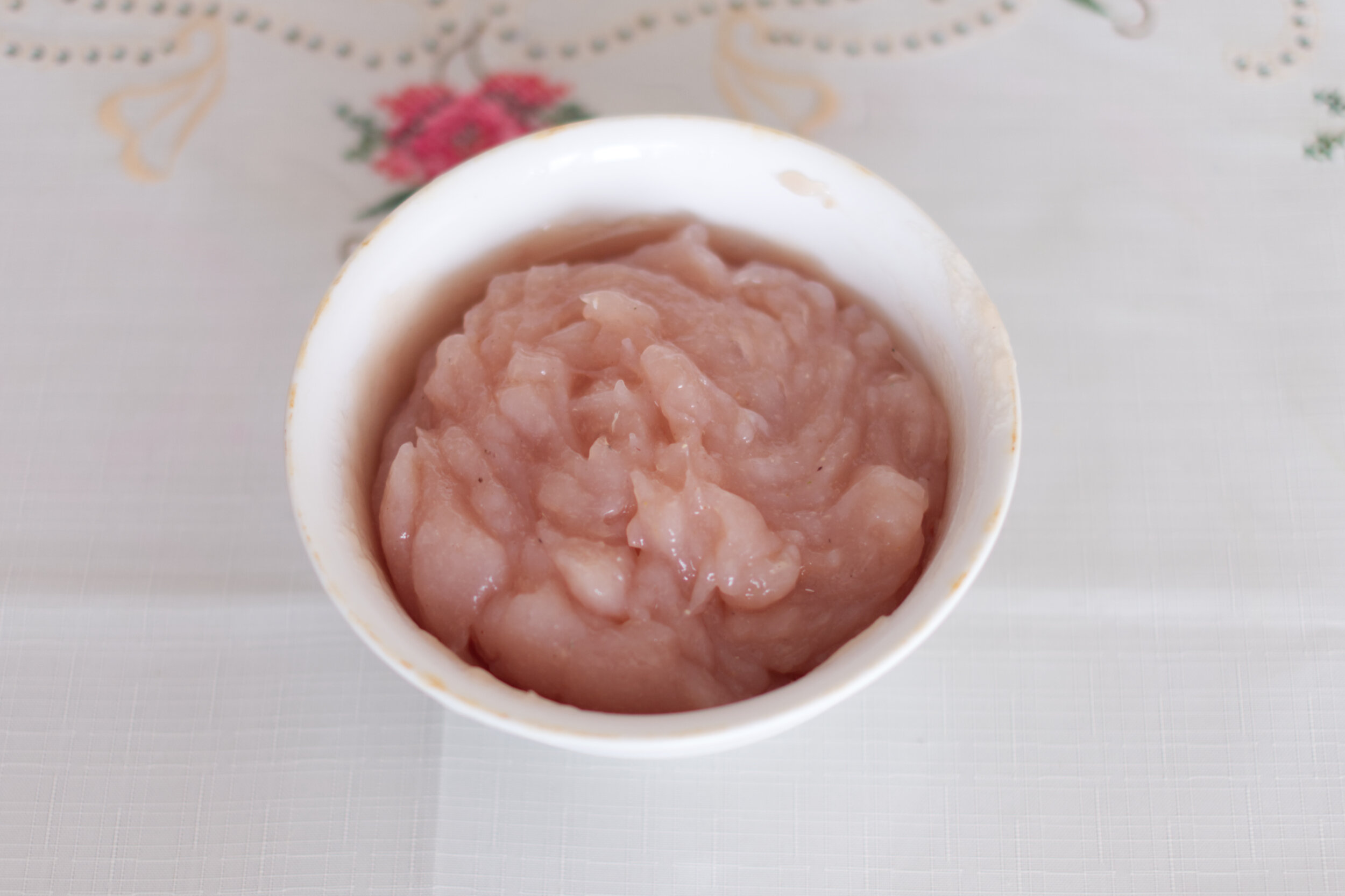Porcelain from Wing On Wo & Co - Steamed Whitefish Update

When I just started this blog/project, I wanted to eventually record recipes of dishes that would be the best possible version of something I could make. As part of plating, I wanted to use plates, bowls, and platters that would also be beautiful and interesting to look at, but made by Chinese artisan makers to break stereotypes of what is represented in the US. Early on, I looked around Chicago quite a bit and it was a short, but disappointing search. I visited an antique shop looking for any leads on where to find modern artisan Chinese porcelain, but the owner said for the Chinatown in Chicago, it's either laughably cheap plates, bowls, and platters or antiques. I didn't bother to check with my parents for the Chinatown back in Honolulu because both my parents are pretty practical and anytime they have visited me have told me that I have too many things in my kitchen.
A little before the Lunar New Year, I came across this fantastic article from NPR. I was excited to read about the history of Wing On Wo & Co and the direction of where their business will go under the leadership of their fifth generation owner, Mei Lum. The photos in the article were fascinating to me because I never saw any porcelain so interesting looking before. I wrote to them immediately to find out if they could ship to Chicago. And yes, they do ship! After some helpful emails from Mei, I'm now a proud owner of some amazing hand painted porcelain. I want to build a collection over time and I'll contact them again when I'm ready for the next purchase.
I decided to use one of the cabbage pattern plates that I bought to see how steamed fish would work. As much as I love me my technology, when I was working on the sous vide whitefish recipe, I always had one problem that seemed inescapable. When cooking fish sous vide, you always have some of the cooking liquid left behind in the bag and it's cloudy because of the motion of the water. That liquid is stock and would taste good in the dish, but in this case using the old technique of steaming gives a better result, but a steeper learning curve. Steaming leaves the rendered fish stock undisturbed so it stays beautifully clear.
I've also seen on little_meg_siu_meg's IG post of this amazing looking steamed grouper. Using this info, there's no hiding any information about the ingredients used in this dish. I have some unknown aged mandarin peels (according to my parents it is in the 20 year range). Instead of making my own salted back fat, I though it's probably more practical and easier to buy good quality lardo. While I strangely couldn't find one that was minimally spiced, I found an extremely fatty end cut of guanciale that would probably work just as nice.
I find it satisfying and frustrating to thinly slice scallions for this dish. While extremely time consuming, I think there is a difference in the taste of scallions depending on how you slice it and how you cook them so this cut isn't entirely just for looks.
It's amazing of how many levels of thought can go into this deceptively simple dish. Adding the pork fat and aged tangerine peels made me think more about how it should be layered and the purpose of each ingredient. Even seasoning the fish with soy sauce is important. As the fish cooks and renders its own stock, it will dilute the soy sauce in the end so you have to anticipate what the end will be.
I'm looking for the minimal cooking time for adding the scallions as well. In this try, I did 30 seconds, though next time I'll see how 20 seconds will work. Seeing how clear the sauce became is so satisfying and way more obvious with this porcelain. I think you wouldn't notice this as much on a monochromatic plate/platter.
Steamed dishes have so much life to them. With a dish like this, as soon as it's cold or hopefully never as leftovers, the quality plummets. Way worse than fried foods. I think it's because steamed foods is about subtlety and fried foods is usually more about louder flavors. I think steaming one of the most unforgiving techniques of cooking. You can't frequently open the lid and prod around and look or else things never cook evenly and quick enough. I'll have to try and become a more sensitive cook and keep practicing to make this better.









